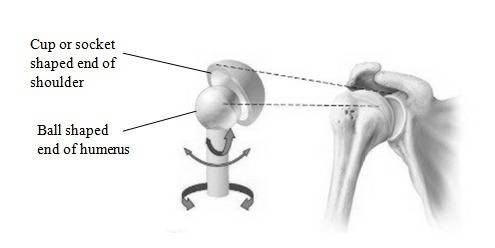
Biology, 15.10.2019 23:00 Killercrawley
Which types of freely movable joints are often found in areas of the body such as the shoulders and hips needing movement in many directions? a. pivot joints b. hinge joints c. ball and socket joints d. saddle joints

Answers: 3
Another question on Biology

Biology, 21.06.2019 21:30
Organisms are classified, or grouped into categories, based on similarities in their characteristics and/or evolutionary relationships. the study of how organisms are classified is known as
Answers: 1

Biology, 22.06.2019 01:30
How do you date a sample of rock that you suspect as being one of the earliest on earth
Answers: 1

Biology, 22.06.2019 03:00
Where does all the water go? according to the environmental protection agency (epa), in a typical wetland environment, 39% of the water is outflow; 46% is seepage; 7% evaporates; and 8% remains as water volume in the ecosystem (reference: united states environmental protection agency case studies report 832-r-93-005). chloride compounds as residuals from residential areas are a problem for wetlands. suppose that in a particular wetland environment the following concentrations (mg/l) of chloride compounds were found: outflow, 60.4; seepage, 73.7; remaining due to evaporation, 26.4; in the water volume, 46.8. (a) compute the weighted average of chlorine compound concentration (mg/l) for this ecological system. (round your answer to one decimal place.) mg/l (b) suppose the epa has established an average chlorine compound concentration target of no more than 58 mg/l. does this wetlands system meet the target standard for chlorine compound concentration? yes. the average chlorine compound concentration (mg/l) is too high. yes. the average chlorine compound concentration (mg/l) is lower than the target. no. the average chlorine compound concentration (mg/l) is lower than the target. no. the average chlorine compound concentration (mg/l) is too high.
Answers: 3

Biology, 22.06.2019 14:30
What is a difference between systemic and pulmonary circulation? a. systemic circulation carries oxygenated blood to the lungs and pulmonary circulation carries deoxygenated blood to the body. b. systemic circulation carries deoxygenated blood to the lungs and pulmonary circulation carries oxygenated blood to the body. c. systemic circulation carries deoxygenated blood to the body and pulmonary circulation carries oxygenated blood to the lungs. d. systemic circulation carries oxygenated blood to the body and pulmonary circulation carries deoxygenated blood to the lungs.
Answers: 1
You know the right answer?
Which types of freely movable joints are often found in areas of the body such as the shoulders and...
Questions

Social Studies, 18.03.2021 01:10






History, 18.03.2021 01:10


Chemistry, 18.03.2021 01:10





Mathematics, 18.03.2021 01:10


Biology, 18.03.2021 01:10

Chemistry, 18.03.2021 01:10



History, 18.03.2021 01:10




